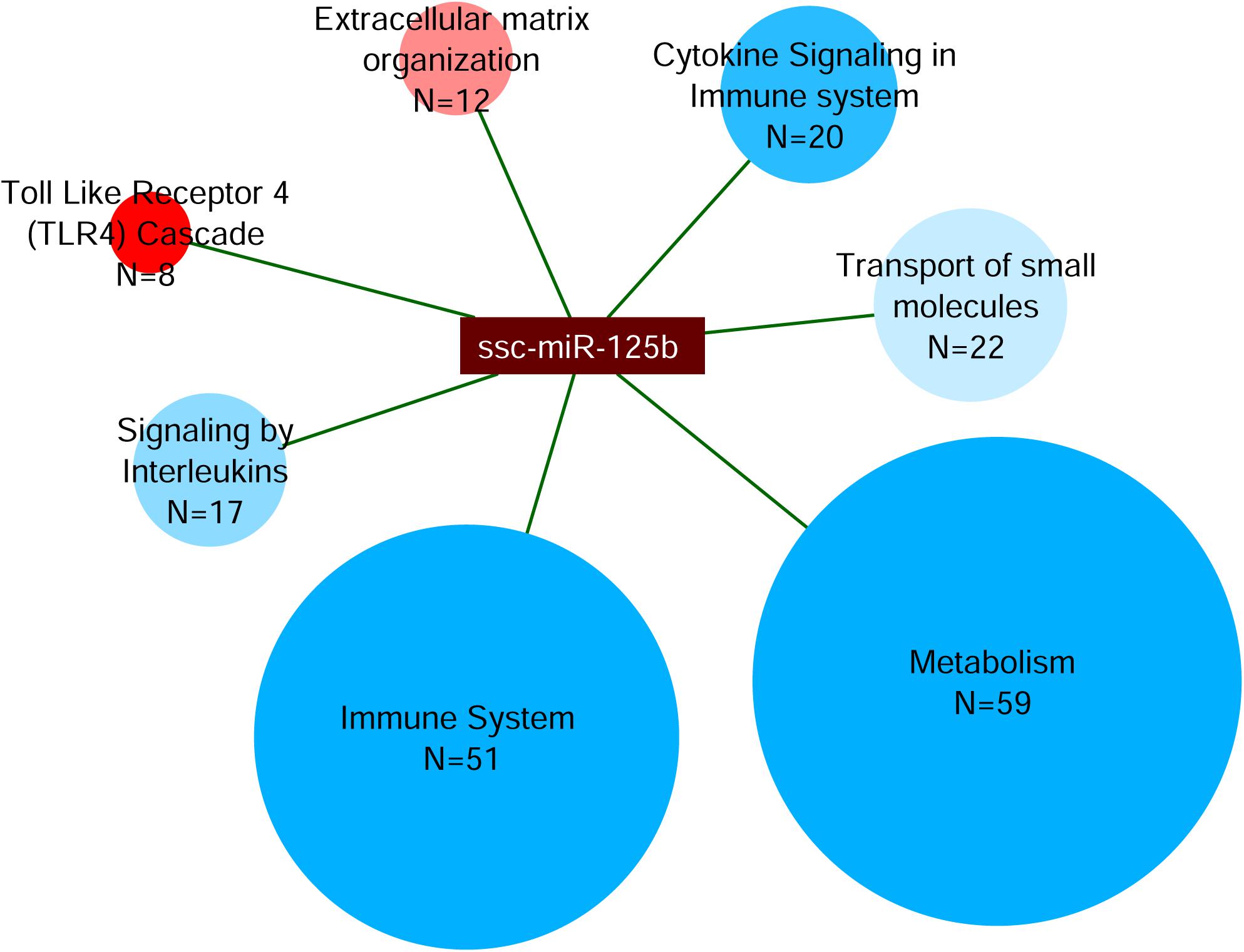The on line Conference ATTRACT – Igniting the Deep Tech Revolution will take pace on 22-23 Sep 2020. The ATTRACT Online Conference website is now live! Please register before 28 August at https://attract-eu-conference.cern.b2match.io/
The ATTRACT Conference offers multiple opportunities to understand the dynamics and contribute to the emergence of a strong European deep tech ecosystem for detection and imaging technologies. The ATTRACT Project is an EC funded initiative led by a consortium of leading European research infrastructures and universities.
CIBERBBN and Nanbiosis are involved in MAGRes : Multiparametric MR approaches for non-invasive glioblastoma therapy response follow-up, one of the 170 projects using sensing and imaging technology
to enable breakthrough innovation funded by ATTRACT and headed by Ana Paula Candiota, Scientific Coordinator of NANBIOSIS U25 NMR: Biomedical Applications I
MAGRes Project:
Glioblastoma (GB) is the major aggressive primary brain tumour in adults showing disproportion between high mortality compared to low overall incidence. Survival after detection is below 18 months even after standard aggressive treatment and no cure has been reported. Novel therapies (e.g. immunotherapy) may be very expensive and it may be relevant to have in vivo, early efficiency, non-invasive imaging biomarkers (IB) to halt unsuccessful use of such therapeutic agents and allowing early evidence-based therapy-related decisions.
Researchers involved in Magret project believes that Magnetic Resonance (MR)-derived data (MRI, MRSI, i.e. imaging, spectroscopic imaging) can be translated into IB of successful GB therapy through in vivo monitoring.
MAGRes proposes a breakthrough innovative hashtag combining MRI and MRSI data acquisition. MRSI data will be used as decoding agent to translate MR-derived information into surrogate IB of successful therapeutic outcome, which definitely represents a step beyond in comparison with present follow-up therapy response strategies based in volume changes of the tumour mass.
The extremely large amount of multi-parametric data acquired for each preclinical subject (mice), longitudinal explorations with several acquisitions will allow us to benefit from powerful state-of-the-art multiparametric data analysis methods based on Deep-Learning (DL). This, together with feature selection and interpretation methods will lead to extraction of MR- based significant IB.
At present, there is no software approach allowing both fast, user-friendly post-processing of conventional MRI and MRSI, and encompassing sophisticated developments in the area of pattern recognition (PR), automated MRSI artifact removal, as well as the weighted combination of multi-parametric images.
Accordingly, MAGRes targets the development and implementation of user-friendly software with capabilities to compute 2D and 3D MR-derived parametric images and to visualise them overlaid on high resolution MR structural images. Moreover, this will be implemented in an open-source software imaging platform as a plugin, paving the way to a scalable system, which could also handle clinical patient data in the immediate future.

The Academic Ranking of World Universities (ARWU), known as
Shanghai Ranking, which was made public on August 15, once again places the University of Zaragoza among the elite of the 500 best universities in the world.
This indicator organizes up to 20,000 university centers worldwide. Among the keys that have been able to positively influence the results of the research, according to the Vice Chancellor for Prospect, Sustainability and Infrastructure of the University of Zaragoza, Francisco Serón, are the increase in public campus funding for four years as well as the quality of their Scientists.
The University of Zaragoza houses three of NANBIOSIS Units:
U9 Synthesis of Nanoparticles Unit, led by Jesús Santamaría and Gema Martínez
U13 Tissue & Scaffold Characterization Unit, led by Miguel Ángel Martínez Barca and Fany Peña
U27 High Performance Computing , led by Pablo Laguna
Since 2003, every August, the Academic Ranking of World Universities (ARWU), known as “Shanghai Ranking,” is published, one of the international reference studies to compare higher education institutions. The ranking selects the 1,000 best educational institutions from a global point of view, among the 20,000 higher education centers that exist.
It is possibly the most famous and most recognized university analysis that values the quality of institutions in the generation of knowledge. The research community respects the results of these rankings because they are based on objective data and their classification is reproducible.
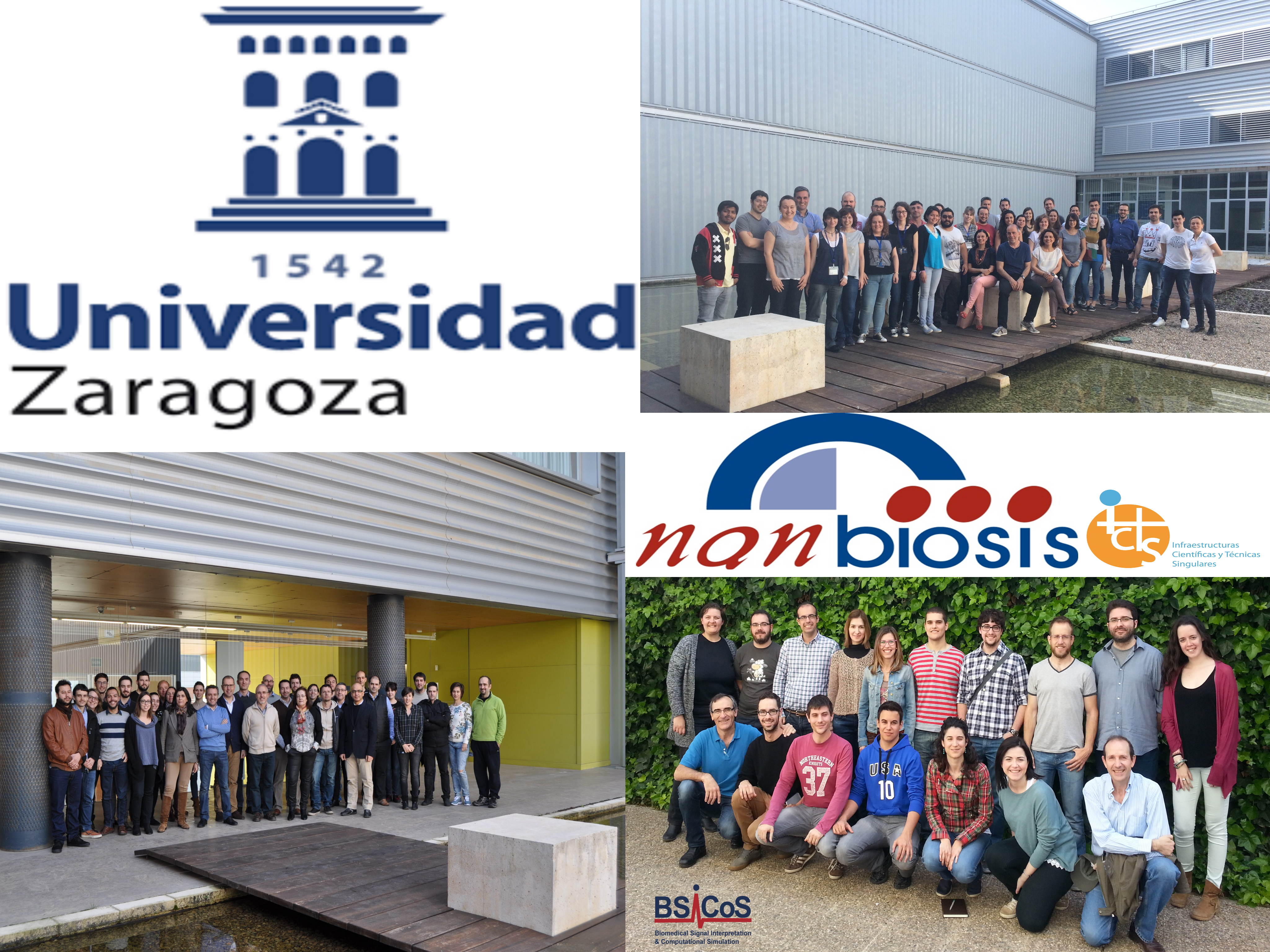
The Academic Ranking of World Universities (ARWU), known as Shanghai Ranking, which was made public on August 15, places the Autonomous University of Barcelona among the elite of the 300 best universities in the world and the first of the Spanish universities.
This indicator organizes up to 20,000 university centers worldwide,
based on transparent methodology and objective third-party data. ARWU is regarded as one of the three most influential and widely observed university rankings
The Autonomous University of Barcelona houses two of NANBIOSIS Units:
U1 Protein Production Platform (PPP), led by Toni Villaverde, Neus Ferrer and Paolo Saccardo, offer an “tailored” service for the design, production and purification of recombinant proteins using both prokaryotic and eukaryotic expression systems
U25 NMR: Biomedical Applications I, led by Carles Arús and Ana Paula Candiota, with a recognized research track record in the use of NMR as a tool for biomedical applications, and more especifically to identify biomarkers of different pathologies, the main objective of this unit is the acquisition, processing and/or interpretation of Nuclear Magnetic Resonance data
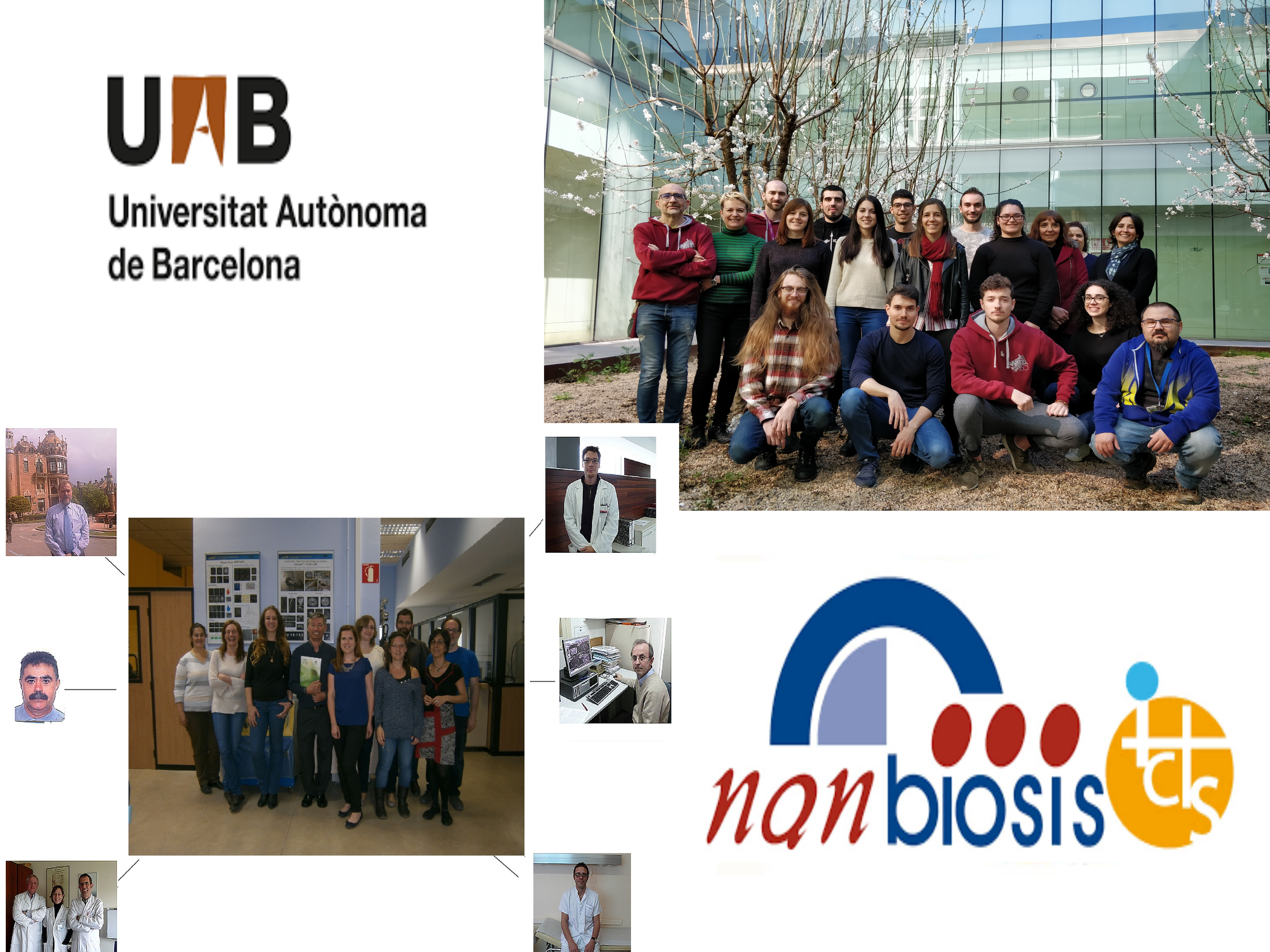
The U2 of NANBIOSIS, Custom Antibody Service (CAbS) has expanded its capabilities with two new equipment items an Automated microdispensing system for microarray technology and a Nitrogen Tank Cryomemo.
The Automated microdispensing system for microarray technology is a sciFLEXARRAYER S3 is an automated piezo driven, non-contact dispensing system of ultra-low volumes specifically designed as an economical entry unit for academia and R&D labs. It consists of XYZ-stages with spindle drives, a piezo dispensing unit and precision equipment for liquid handling. The system handles volumes from 50 picoliters up to several microliters. The S3 is suitable for the production DNA, protein, glycan microarrays and biosensor loading, MALDI-MS sample preparation and target loading, accurate dilution series and addition of tiny aliquots, printing chemical libraries, spotting onto disc format (round targets) and customized targets, assay development and screening assays, microarray-based analysis
The Nitrogen Tank Cryomemo(Cryopal): the Cryomemo device is an electronic kit consisting of level and temperature indicators, and acontrol and configuration interface. It is used to control and regulate the nitrogen levels and temperature of cryogenic tanks (GT 40, Asperge, Espace and RCB) using sernsorand solenoid valves that control nitrogen intake andblowdown. It is also used to manage alarms.
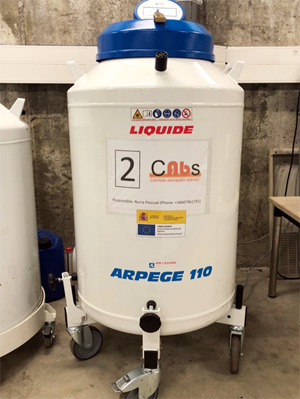
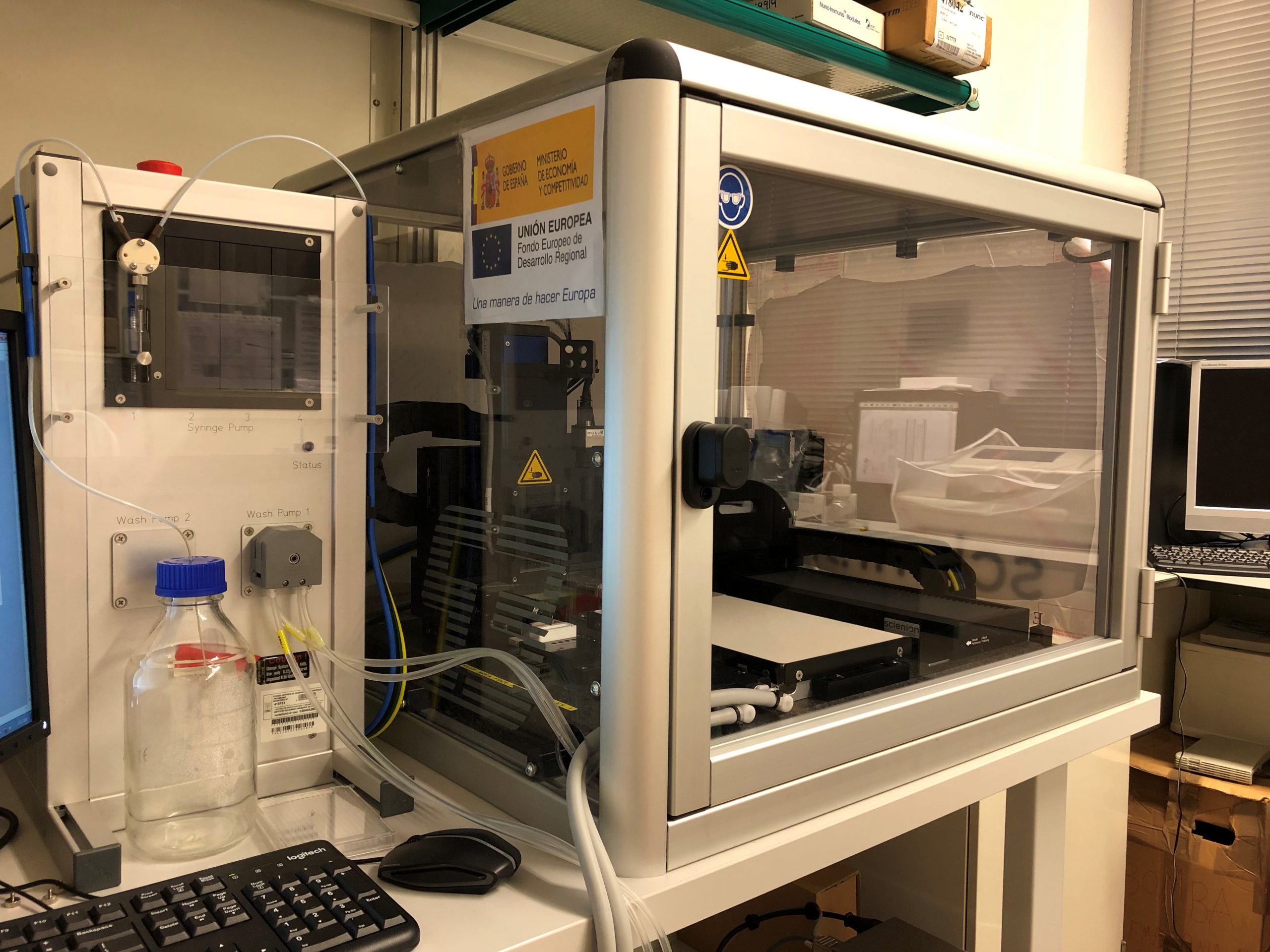
Researcher of CCMIJU published an article in the scientific journal FRONTIERS IN CELL AND DEVELOPMENTAL BIOLOGY with the participation of NANBIOSIS Unit 14 of Cell Stem Cell
Therapy where culture and in vitro studies were
performed,
The researchers have shown that the regenerative potential and immunomodulatory capacity of cardiosphere-derived cells (CDCs) is mediated by paracrine mechanisms. In this process, extracellular vesicles derived from CDCs (EV-CDCs) are key mediators of their therapeutic effect. Considering the future applicability of these vesicles in human diseases, an accurate preclinical-to-clinical translation is needed, as well as an exhaustive molecular characterization of animal-derived therapeutic products. Based on that, the main goal of this study was to perform a comprehensive characterization of proteins and miRNAs in extracellular vesicles from porcine CDCs as a clinically relevant animal model.
The analysis was performed by identification and quantification of proteins and miRNA expression profiles. The results revealed the presence of clusters of immune-related and cardiac-related molecular biomarkers in EV-CDCs. Additionally, considering that priming stem cells with inflammatory stimuli may increase the therapeutic potential of released vesicles, here we studied the dynamic changes that occur in the extracellular vesicles from IFN gamma-primed CDCs. These analyses detected statistically significant changes in several miRNAs and proteins. Notably, the increase in interleukin 6 (IL6) protein, as well as the increase in mir-125b (that targets IL6 receptor) was especially relevant. These results suggest a potential involvement of EV-CDCs in the regulation of the IL6/IL6R axis, with implications in inflammatory-mediated diseases.
Article of reference: DOI: 10.3389/fcell.2020.00321
